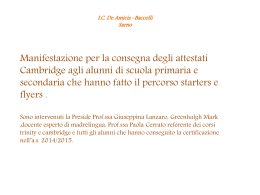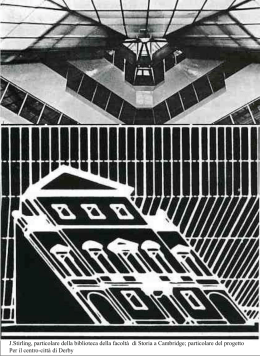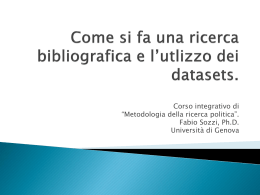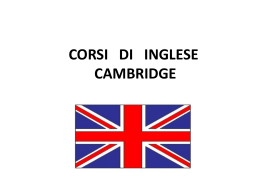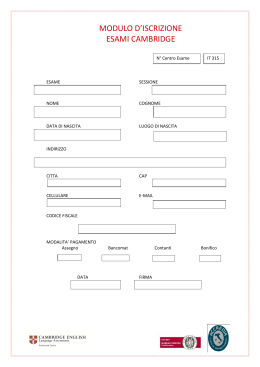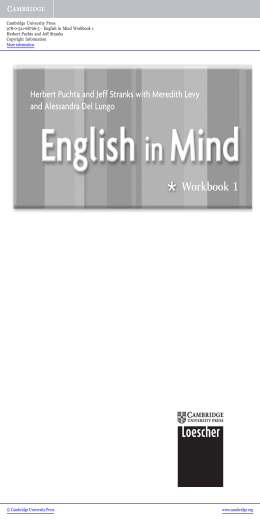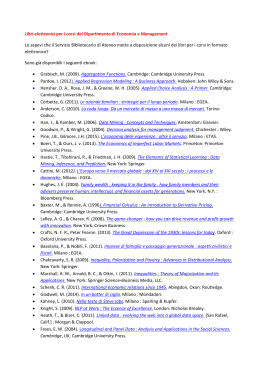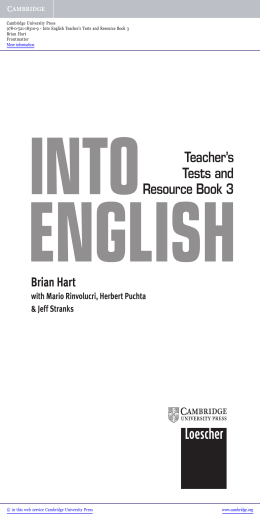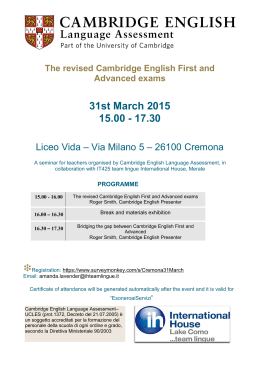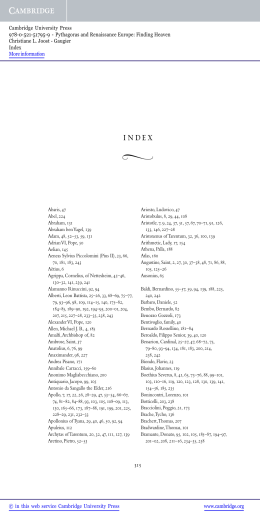Cambridge University Press 978-0-521-88998-8 - Fashions and Legacies of Nineteenth-Century Italian Opera Edited by Roberta Montemorra Marvin and Hilary Poriss Frontmatter More information Fashions and Legacies of Nineteenth-Century Italian Opera Operatic works by Italian composers of the nineteenth century have undergone countless transformations since their premieres, shifting shape in response to a variety of new geographic, temporal, technological, and performative contexts. These enduring works by Rossini, Donizetti, Bellini, Verdi, Puccini, and their contemporaries have myriad stories to tell. Fashions and Legacies reconstructs a selection of these stories, exploring ways in which operatic works have been reshaped and revived throughout the nineteenth, twentieth, and twenty-first centuries. While focusing on how these works have been altered, the twelve contributors in this book also respond to fundamental questions: how has this music retained – or sacrificed – its powerful messages in the face of deconstruction and recontextualization over time and place? What happens to these operas once they have escaped control of their authors? The contributions of singers, stage directors, conductors, and other theatrical personalities stand front and center of the volume. roberta montemorra marvin is Director of the Institute for Italian Opera Studies at the University of Iowa, where she is also a Research Associate and an Associate Professor. hilary poriss is Assistant Professor of Music at Northeastern University. © in this web service Cambridge University Press www.cambridge.org Cambridge University Press 978-0-521-88998-8 - Fashions and Legacies of Nineteenth-Century Italian Opera Edited by Roberta Montemorra Marvin and Hilary Poriss Frontmatter More information Fashions and Legacies of Nineteenth-Century Italian Opera edited by roberta montemorra marvin and hilary poriss © in this web service Cambridge University Press www.cambridge.org Cambridge University Press 978-0-521-88998-8 - Fashions and Legacies of Nineteenth-Century Italian Opera Edited by Roberta Montemorra Marvin and Hilary Poriss Frontmatter More information cambridge university press Cambridge, New York, Melbourne, Madrid, Cape Town, Singapore, São Paulo, Delhi Cambridge University Press The Edinburgh Building, Cambridge CB2 8RU, UK Published in the United States of America by Cambridge University Press, New York www.cambridge.org Information on this title: www.cambridge.org/9780521889988 © Cambridge University Press 2009 This publication is in copyright. Subject to statutory exception and to the provisions of relevant collective licensing agreements, no reproduction of any part may take place without the written permission of Cambridge University Press. First published 2009 Printed in the United Kingdom at the University Press, Cambridge A catalogue record for this publication is available from the British Library ISBN 978-0-521-88998-8 hardback Cambridge University Press has no responsibility for the persistence or accuracy of URLs for external or third-party internet websites referred to in this publication, and does not guarantee that any content on such websites is, or will remain, accurate or appropriate. © in this web service Cambridge University Press www.cambridge.org Cambridge University Press 978-0-521-88998-8 - Fashions and Legacies of Nineteenth-Century Italian Opera Edited by Roberta Montemorra Marvin and Hilary Poriss Frontmatter More information Contents List of figures and tables [page vii] List of musical examples [ix] Notes on contributors [xii] Acknowledgments [xvi] A note about translations [xvii] 1 Introduction: Italian opera’s fashions and legacies [1] Hilary Poriss 2 Viardot sings Handel (with thanks to George Sand, Chopin, Meyerbeer, Gounod, and Julius Rietz) [9] Ellen T. Harris 3 Partners in rhyme: Alphonse Royer, Gustave Vaëz, and foreign opera in Paris during the July Monarchy [30] Mark Everist 4 Verdian opera in the Victorian parlor Roberta Montemorra Marvin [53] 5 I falsi Puritani: a case of espionage [76] Fabrizio Della Seta 6 “To the ear of the amateur”: performing ottocento opera piecemeal [111] Hilary Poriss 7 Peeping at pachyderms: convergences of sex and music in France around 1800 [132] Jeffrey Kallberg 8 Aida and nine readings of empire Ralph P. Locke [152] 9 Comic sights: stage directions in Luigi Ricci’s autograph scores [176] Francesco Izzo © in this web service Cambridge University Press www.cambridge.org Cambridge University Press 978-0-521-88998-8 - Fashions and Legacies of Nineteenth-Century Italian Opera Edited by Roberta Montemorra Marvin and Hilary Poriss Frontmatter More information vi Contents 10 Staging and form in Giuseppe Verdi’s Otello [196] Andreas Giger 11 Stanislavsky’s La bohème (1927) David B. Rosen [219] 12 What is tradition? [239] Will Crutchfield 13 Epilogue: the art of “translation” John Mauceri [261] Index [271] © in this web service Cambridge University Press www.cambridge.org Cambridge University Press 978-0-521-88998-8 - Fashions and Legacies of Nineteenth-Century Italian Opera Edited by Roberta Montemorra Marvin and Hilary Poriss Frontmatter More information Figures and Tables Figures 2.1 Handel, recitative and aria from Sento là che ristretto, in Viardot’s hand (Houghton Library MS Mus 232 [78]; by permission of the Houghton Library, Harvard University) [page 12] 2.2 Handel, “Verdi prati,” arranged by Gounod and in his hand (Houghton Library MS Mus 232 [76]; by permission of the Houghton Library, Harvard University) [18] 2.3 Handel, scene for Dejanira from Hercules, in Rietz’s hand (Houghton Library MS Mus 232 [77]; by permission of the Houghton Library, Harvard University) [20] 4.1 Cover of “Fair Shines the Moon,” text by W. H. Bellamy (London: Musical Bouquet Office and J. Allen [1856?]) [68] 4.2 Cover of “Day Dreams,” text by F. Enoch, music adapted by W. H. Montgomery (London: D’Almaine & Co. [1855]) [69] 4.3 Cover of “Soft on the Tranquil Deep: The Boatman’s Song of the Mincio,” text by Fanny E. Lacy (London: Leoni Lee [1855]) [70] 7.1 Illustration from Jacques Cazotte, Le diable amoureux (Paris: Esprit, 1776) [136] 9.1 Chi dura vince, autograph score (Archivio Casa Ricordi, Milan, MS Rari B.4/9[a–b], f. 75r; by permission of Casa Ricordi, Milan) [180] 10.1 Act II, scene 5, triangular outline of the blocking [206] 10.2 Disposizione scenica, diagrams for Act II, scene 5 (Hepokoski and Ferrero [eds.], “Otello” di Giuseppe Verdi [Milan: Ricordi, 1990]) [207] 10.3 Disposizione scenica, diagrams pertaining to the Act III Finale (Hepokoski and Ferrero [eds.], “Otello” di Giuseppe Verdi [Milan: Ricordi, 1990]) [213] © in this web service Cambridge University Press www.cambridge.org Cambridge University Press 978-0-521-88998-8 - Fashions and Legacies of Nineteenth-Century Italian Opera Edited by Roberta Montemorra Marvin and Hilary Poriss Frontmatter More information viii Figures and tables Tables 3.1 Royer and Vaëz, French adaptations of Italian operas [32] 3.2 Theatrical and literary works by Royer and/or Vaëz [42] 8.1 Nine readings of Aida’s Egyptian empire, arranged in a rough continuum from most literal (1) to most metaphorical (9) [154] 9.1 Il nuovo Figaro, Introduzione [no. 1], structure and stage directions [182] 9.2 Il nuovo Figaro, Duetto Barone–Amalia [no. 2], structure and stage directions [185] 10.1 Structure of the storm scene, Verdi’s Otello [198] 10.2 Lyrical landmarks of the storm scene, Verdi’s Otello [199] 10.3 Structure of the Act I love duet, Verdi’s Otello [201] 10.4 Form and drama in the love duet, Verdi’s Otello [202] 10.5 Structure of Act III, scene 8, Verdi’s Otello [210] © in this web service Cambridge University Press www.cambridge.org Cambridge University Press 978-0-521-88998-8 - Fashions and Legacies of Nineteenth-Century Italian Opera Edited by Roberta Montemorra Marvin and Hilary Poriss Frontmatter More information Musical examples 5.1A I Puritani, Cavatina di Riccardo, mm. 46–53 [page 84] 5.1B I falsi Puritani, Scena ed Aria Riccardo, I-Mc Ms 22 bis, vol. 1, ff. 51r–52r; I-Fc Basevi 21, vol. 1, ff. 51v–52v [85] 5.2A I Puritani, Cavatina di Riccardo, mm. 69–73 [86] 5.2B I falsi Puritani, Scena ed Aria Riccardo, I-Mc Ms 22 bis, vol. 1, ff. 53v–54r; I-Fc Basevi 21, vol. 1, f. 54r–54v [87] 5.3 I falsi Puritani, Scena ed Aria Riccardo, I-Mc Ms 22 bis, vol. 1, f. 55r–55v; I-Fc Basevi 21, vol. 1, ff. 56v–57v [88] 5.4 I falsi Puritani, Seguito del Duetto [Elvira ed Arturo] e Finale III, I-Mc Ms 22 bis, vol. 2, ff. 220v–221v; I-Fc Basevi 21, vol. 3, ff. 110v–112v [90] 5.5A I Puritani, Recitativo dopo la Cavatina d’Arturo, mm. 32–41 [92] 5.5B I falsi Puritani, Cantabile e Scena d’Arturo, I-Mc Ms 22 bis, vol. 1, ff. 144r–145v; I-Fc Basevi 21, vol. 1, ff. 158v–159v [93] 5.6A I Puritani, Finale dell’Atto I, mm. 148–173 [94] 5.6B I falsi Puritani, Cantabile e Scena d’Arturo, I-Mc Ms 22 bis, vol. 1, ff. 151v–153v; I-Fc Basevi 21, vol. 1, ff. 165r–167r [95] 5.7 I falsi Puritani, Preludio e Introduzione, I-Mc Ms 22 bis, vol. 1, ff. 3v–4v; I-Fc Basevi 21, vol. 1, ff. 3v–4r [95] 5.8A I Puritani, Introduzione, mm. 60–75 [96] 5.8B I falsi Puritani, Preludio e Introduzione, I-Mc Ms 22 bis, vol. 1, ff. 8v–9v; I-Fc Basevi 21, vol. 1, ff. 8v–9r [96] 5.9A I Puritani, Introduzione, mm. 1–16 [97] 5.9B I falsi Puritani, Preludio e Introduzione, I-Mc Ms 22 bis, vol. 1, ff. 12v–13v; I-Fc Basevi 21, vol. 1, ff. 12v–13v [97] 5.10A I Puritani, Introduzione, mm. 478–485 [98] 5.10B I falsi Puritani, Preludio e Introduzione, I-Mc Ms 22 bis, ff. 34v–36r; I-Fc Basevi 21, ff. 34v–35v [98] 5.11A I Puritani, Scena d’Arturo [e Duetto Elvira ed Arturo], mm. 1–53 [99] 5.11B I falsi Puritani, Scena e Romanza Arturo – Tempesta, I-Mr, vol. 2, ff. 119r–120v; I-Fc Basevi 21, vol. 3, ff. 1v–3r [100] © in this web service Cambridge University Press www.cambridge.org Cambridge University Press 978-0-521-88998-8 - Fashions and Legacies of Nineteenth-Century Italian Opera Edited by Roberta Montemorra Marvin and Hilary Poriss Frontmatter More information x Musical examples 7.1 7.2 9.1 9.2 9.3 9.4 10.1 10.2 10.3 10.4 12.1 12.2A–12.2B Rousseau, Le devin du village, with parody text from Pigault-Lebrun, L’enfant du bordel (1800) (in [Sarane] Alexandrian [ed.], L’érotisme au XIXe siècle [Paris: JeanClaude Lattès, 1993]) [138] The “instrumental passage” from Rossini’s “Amor, possente nome!” (Armida), which Stendhal identified with “love in the Italian manner” (adapted from Gioachino Rossini, Armida, ed. Charles S. Brauner and Patricia B. Brauner, Edizione critica delle opere di Gioachino Rossini, Series I, vol. 22 [Pesaro: Fondazione Rossini, 1997]) [144] Il nuovo Figaro, Introduzione [no. 1], Leporello’s entrance (Ricci, Il nuovo Figaro, piano-vocal score [Milan: Lucca, 1832] with musical emendations and stage directions based on Ricci’s autograph score, Archivio Casa Ricordi, MS Rari.B.5/1[a–c]) [177] Il nuovo Figaro, Introduzione [no. 1], Ricci’s stage directions in the stretta (Ricci, Il nuovo Figaro [Milan: Lucca, 1832] with emendations based on Archivio Casa Ricordi, MS Rari.B.5/1[a–c]) [183] Il nuovo Figaro, Duetto Barone–Amalia [no. 2], beginning of slow movement (Ricci, Il nuovo Figaro [Milan: Lucca, 1832] with emendations based on Archivio Casa Ricordi, MS Rari.B.5/1[a–c]) [186] Il nuovo Figaro, Finale Primo [no. 6], beginning of pezzo concertato (Ricci, Il nuovo Figaro [Milan: Lucca, 1832] with emendations based on Archivio Casa Ricordi, MS Rari. B.5/1[a–c]) [189] “Ora e per sempre addio” (Otello) (Verdi, Otello [Milan: Ricordi, n.d.; reprint, 1983]) [204] “Era la notte” (Jago) (Verdi, Otello [Milan: Ricordi, n.d.; reprint, 1983]) [204] “Sì pel ciel,” concluding a due (Otello and Jago) (Verdi, Otello [Milan: Ricordi, n.d.; reprint, 1983]) [205] Act III, scene 8 (libretto) (Verdi, Otello, verses by Arrigo Boito, Teatro alla Scala, 1886–1887 [Milan: Ricordi]) [208] Donizetti, original cadenza for “Una furtiva lagrima” (Donizetti, L’elisir d’amore [Milan: Ricordi, 1916]) [245] Donizetti, two autograph cadenzas for “Una furtiva lagrima” with cancelled earlier layer in brackets (Bibliothèque nationale, Paris, Ms. 4062[2]) [245] © in this web service Cambridge University Press www.cambridge.org Cambridge University Press 978-0-521-88998-8 - Fashions and Legacies of Nineteenth-Century Italian Opera Edited by Roberta Montemorra Marvin and Hilary Poriss Frontmatter More information Musical examples 12.3A–12.3B 12.4A–12.4D 12.5 12.6 12.7 12.8 12.9 12.10 xi Giovanni Mario, two cadenzas for “Una furtiva lagrima” (Conservatorio di musica S. Cecilia, Rome, Fondo Mario, Edizioni a stampa 8.A.79) [246] Cadenzas for “Una furtiva lagrima,” as recorded by (4A) Fernando de Lucia (1860–1925, compact disc Symposium 1231), (4B) Alessandro Bonci (1870–1940, compact disc Pearl GEMM 9168), (4C) Bonci (compact disc Preiser 89525), and (4D) Giuseppe Anselmi (1876–1929, compact disc Bongiovanni GB 1118–2) [247] Cadenza for “Una furtiva lagrima,” as recorded by Enrico Caruso (1873–1921, compact disc EMI Classics 0077776104621) [247] “Nessun dorma,” showing “vincerò” with the high note on the middle syllable as a whole note [252] Puccini’s notation of “Nessun dorma,” showing “vincerò” with the high note on the middle syllable as a sixteenth note [252] Verdi, Otello, Act I (derived from Verdi, Otello: dramma lirico in quattro atti, new edn, rev. and corrected [Milan: Ricordi, 2003; reprinted from the 1913 edn]) [254] Verdi, Aida, Act III, “Rivedrai le foreste imbalsamate,” (derived from Verdi, Aida: opera in quattro atti [Milan: Ricordi, 1980; reprinted from the 1913 edn]) [255] Verdi, Aida, Act III, “Rivedrai le foreste imbalsamate,” with the approximate rhythm sung by Giuseppe Valdengo, conducted by Arturo Toscanini (compact disc RCA 60300) [255] © in this web service Cambridge University Press www.cambridge.org Cambridge University Press 978-0-521-88998-8 - Fashions and Legacies of Nineteenth-Century Italian Opera Edited by Roberta Montemorra Marvin and Hilary Poriss Frontmatter More information Contributors will crutchfield is currently Director of Opera at the Caramoor International Music Festival and Principal Guest Conductor of the Polish National Opera (Warsaw). His repertory has comprised twenty-three operas by Rossini, Donizetti, and Bellini, including the reconstructed score of Donizetti’s Elisabetta al castello di Kenilworth, based on materials he discovered in Paris and London. His work on performance practices has appeared in 19th-Century Music, Journal of the American Musicological Society, The New Grove Dictionary of Opera, and the handbook Performance Practice. fabrizio della seta is Professor in the Department of Musicology at the University of Pavia in Cremona. He is a co-editor of the Edizione critica delle opere di Vincenzo Bellini, for which he is currently working on I Puritani. He has published three critical editions of operas, three books, and several essays on various subjects from the late Middle Ages to nineteenth-century opera. His book, Non senza pazzia: Prospettive sul teatro musicale appeared in 2008. mark everist is Professor of Music at the University of Southampton. He has published widely on the music of western Europe 1150–1330, French opera in the first half of the nineteenth century, Mozart, reception theory, and historiography in journals such as Journal of the American Musicological Society, Journal of the Royal Musical Association, Revue de Musicologie, 19th-Century Music, Early Music History, Cambridge Opera Journal, and Acta Musicologica. He is the author of Polyphonic Music in Thirteenth-Century France, French Motets in the Thirteenth Century (Cambridge University Press, 1994), Music Drama at the Paris Odéon, 1824–1828, and Giacomo Meyerbeer and Music Drama in NineteenthCentury Paris. andreas giger is Associate Professor of Music at Louisiana State University. His research interests have concentrated on nineteenthcentury Italian opera and the work of Leonard Bernstein. He is the author of Verismo (2004) in the Handwörterbuch der musikalischen © in this web service Cambridge University Press www.cambridge.org Cambridge University Press 978-0-521-88998-8 - Fashions and Legacies of Nineteenth-Century Italian Opera Edited by Roberta Montemorra Marvin and Hilary Poriss Frontmatter More information Notes on contributors xiii Terminologie and of articles in several books and journals, including The Cambridge Companion to Verdi, Journal of the American Musicological Society, and the second edition of The New Grove Dictionary of Music and Musicians. He is also co-editor of Music in the Mirror, founder of the internet database Saggi musicali italiani, and author of Verdi and the French Aesthetic: Verse, Stanza, and Melody in Nineteenth-Century Opera (Cambridge University Press, 2008). ellen t. harris is Class of 1949 Professor of Music at the Massachusetts Institute of Technology. Her most recent book, Handel as Orpheus: Voice and Desire in the Chamber Cantatas, won the Kinkeldey Award from the American Musicological Society and the Gottschalk Prize from the Society for Eighteenth-Century Studies. Her articles and reviews have appeared in numerous publications including Journal of the American Musicological Society, Händel Jahrbuch, Notes, and the New York Times. In 2004 her Music & Letters article “Handel the Investor” won the Westrup Prize. Harris’s current work focuses on Handel, his London friends, and his legatees. f rancesco izzo has taught at New York University and East Carolina University and is presently Lecturer in Music at the University of Southampton. His recent publications include articles on Verdi’s Un giorno di regno (Acta Musicologica), the politics of opera buffa during the Risorgimento (Journal of Musicology), and the cult of Mary in Verdi’s I Lombardi alla Prima crociata and Giovanna d’Arco (Journal of the American Musicological Society). He is currently writing a book on opera buffa after Rossini and editing Un giorno di regno for The Works of Giuseppe Verdi. jef frey kallberg is Professor of Music at the University of Pennsylvania. He publishes widely on the music and cultural contexts of Chopin. Kallberg prepared the critical edition of Luisa Miller for The Works of Giuseppe Verdi and wrote the articles on “Gender” and “Sex, Sexuality” for the second edition of The New Grove Dictionary of Music and Musicians. ralph p. locke is Professor of Musicology at the University of Rochester’s Eastman School of Music and Senior Editor of the University of Rochester Press’s Eastman Studies in Music. His books include Music, Musicians, and the Saint-Simonians; Musical Exoticism: Images and Reflections (Cambridge University Press, 2008); and (as contributing co-editor) Cultivating Music in America: Women Patrons © in this web service Cambridge University Press www.cambridge.org Cambridge University Press 978-0-521-88998-8 - Fashions and Legacies of Nineteenth-Century Italian Opera Edited by Roberta Montemorra Marvin and Hilary Poriss Frontmatter More information xiv Notes on contributors and Activists since 1860. Locke is a five-time winner of the ASCAP– Deems Taylor Award. His 2005 article in Cambridge Opera Journal on exoticism in Verdi’s Aida received the H. Colin Slim Award from the American Musicological Society. roberta montemorra marvin is Director of the Institute for Italian Opera Studies at the University of Iowa, where she is a Research Associate and an Associate Professor. She is co-editor of Operatic Migrations: Transforming Works and Crossing Boundaries; Historical Musicology: Sources, Methods, Interpretations; and Verdi 2001: Proceedings of the International Conference; as well as Associate General Editor for The Works of Giuseppe Verdi. She is also series editor for Ashgate Interdisciplinary Studies in Opera and editor of the forthcoming Cambridge Verdi Encyclopedia. Her monograph Verdi and the Victorians is forthcoming. john mauceri is Chancellor of the University of North Carolina’s School of the Arts in Winston-Salem and Founding Director of the Hollywood Bowl Orchestra. A graduate of Yale College and Yale University, he served on the faculty of his alma mater for fifteen years. He is a former music director of the Washington (National) Opera, the Pittsburgh Opera, Scottish Opera, and the Teatro Regio in Turin. He has conducted for most of the world’s leading opera houses and symphony orchestras, and has contributed articles to scholarly journals. He is a winner of the Grammy, Tony, Olivier, Emmy, Deutsche Schallplatten, Edison Klassiek, Billboard, Diapason d’Or, and Cannes Classical Music Awards. hilary poriss is Assistant Professor of Music at Northeastern University. She received her Ph.D. from the University of Chicago and taught at the University of Cincinnati before moving to Boston. In 2006–2007 she was the recipient of the Millicent Mercer Johnson Postdoctoral Fellowship from the American Academy in Rome. Her research focuses on nineteenth-century Italian opera and diva culture. Her book Changing the Score: Arias, Prima Donnas, and the Authority of Performance is forthcoming; articles and reviews have appeared in 19th-Century Music, Cambridge Opera Journal, Verdi Forum, and other journals and books. david b. rosen, Professor Emeritus of Music at Cornell University, specializes in Italian opera of the nineteenth and early twentieth centuries, although he has research interests in Mozart’s concertos, Britten’s operas, and film music as well. He edited Verdi’s Messa da Requiem in The Works of Giuseppe Verdi and wrote the Cambridge © in this web service Cambridge University Press www.cambridge.org Cambridge University Press 978-0-521-88998-8 - Fashions and Legacies of Nineteenth-Century Italian Opera Edited by Roberta Montemorra Marvin and Hilary Poriss Frontmatter More information Notes on contributors xv Music Handbook about the work. More recent publications include a study of the contemporary staging manual (disposizione scenica) for Verdi’s Un ballo in maschera, a co-edited Festschrift for Andrew Porter, and essays about Verdi and Puccini in that volume as well as in Cambridge Opera Journal, Verdi Forum, and Studi pucciniani. © in this web service Cambridge University Press www.cambridge.org Cambridge University Press 978-0-521-88998-8 - Fashions and Legacies of Nineteenth-Century Italian Opera Edited by Roberta Montemorra Marvin and Hilary Poriss Frontmatter More information Acknowledgments A project such as this one is the fruit of the labors of many people, to whom the co-editors owe many debts of thanks. The imaginative scholarship of our contributors made the volume possible. Vicki Cooper, Rebecca Jones, and Rosina Di Marzo at Cambridge University Press shepherded the project through from beginning to end, providing expert guidance every step of the way. The referees for the proposal offered insightful suggestions, to which we hope we have done justice, and Patricia Brauner and Kathleen Hansell served as consultants to us early in the process. Several institutions cooperated with authors in the creation of this volume; they are acknowledged in individual chapters. John Snelson of the Royal Opera House at Covent Garden responded promptly and cheerfully to queries and intervened with his colleagues to obtain information for us. The University of Iowa’s Obermann Center for Advanced Studies (Jay Semel, Director) provided logistical and technical support for the project, the center’s Academic Technologies Specialist, Karla Tonella, above all. Northeastern University provided a generous grant through the Office of the Provost and the Department of Music, as well as support during the latter stages of preparation of the manuscript. Arthur Rishi, Executive Director of Prism Opera and Director of Concerts at Northeastern, assisted with preparation of some of the images. Anthony De Ritis, Chair of the Department of Music, deserves special thanks for his encouragement of this project. Both co-editors have generous, talented, and patient spouses who played important roles in the production of this book, beyond listening to what must have seemed to them endless chatter about the project. Chris Bailey prepared music examples for Chapters 9 and 12 and assisted in preparing the files for other images as well. Conrad Marvin designed and photographed the cover image for the jacket. And, of course, we are grateful to the dedicatee of this volume, Philip Gossett, for having served as an inspiration to all of us who work on the fashions and legacies of nineteenth-century Italian opera. © in this web service Cambridge University Press www.cambridge.org Cambridge University Press 978-0-521-88998-8 - Fashions and Legacies of Nineteenth-Century Italian Opera Edited by Roberta Montemorra Marvin and Hilary Poriss Frontmatter More information A note about translations The chapters in this volume employ a variety of non-English sources, primarily Italian and French. In cases where this material is not easily accessible and where the translations are the authors’ own, the original text is normally included in the notes. When authors rely on easily accessible, published translations by others, the sources are identified in the notes, but the original text is not included. With a few exceptions, decisions have been made on a case-by-case basis. © in this web service Cambridge University Press www.cambridge.org
Scarica
